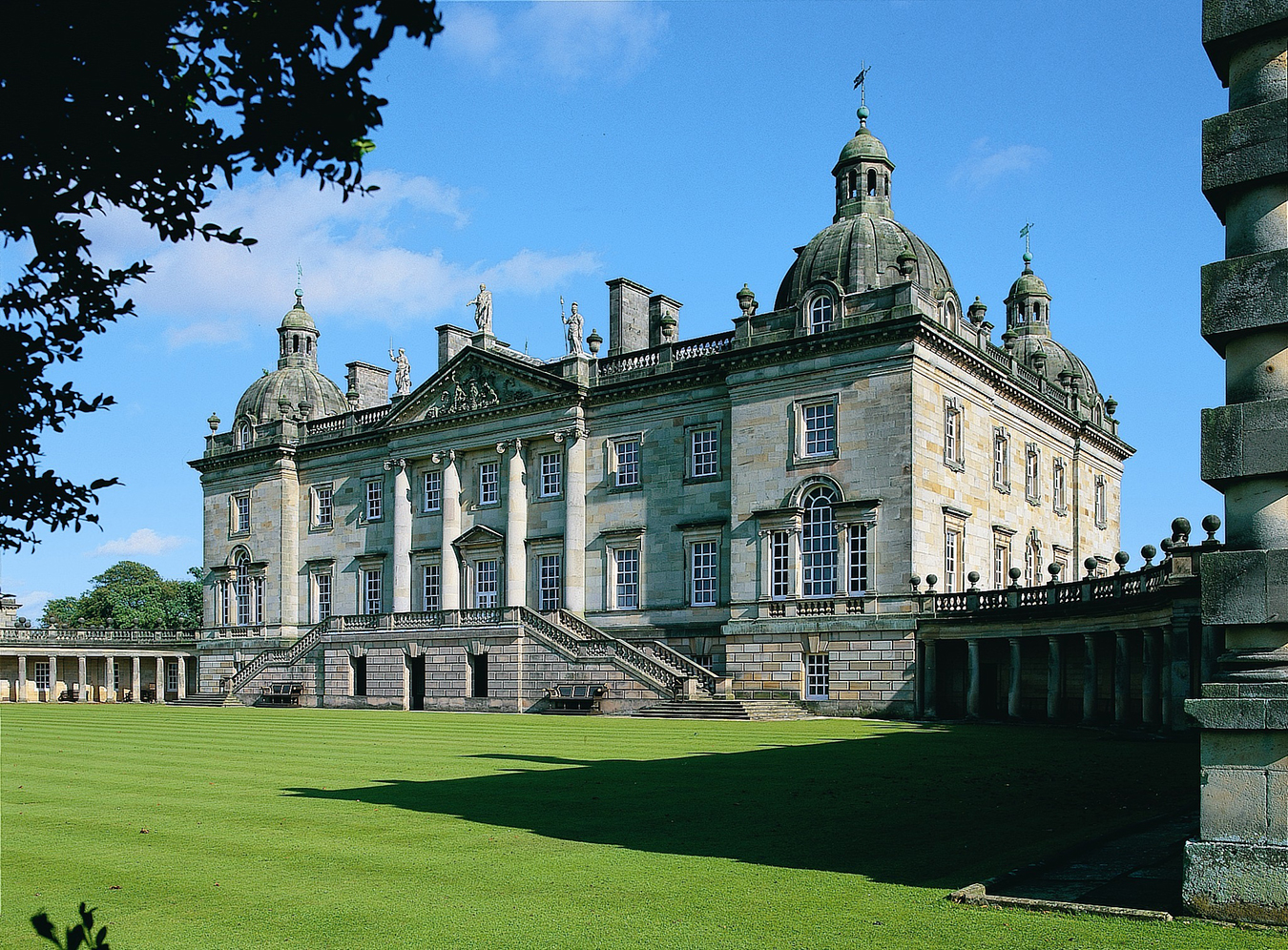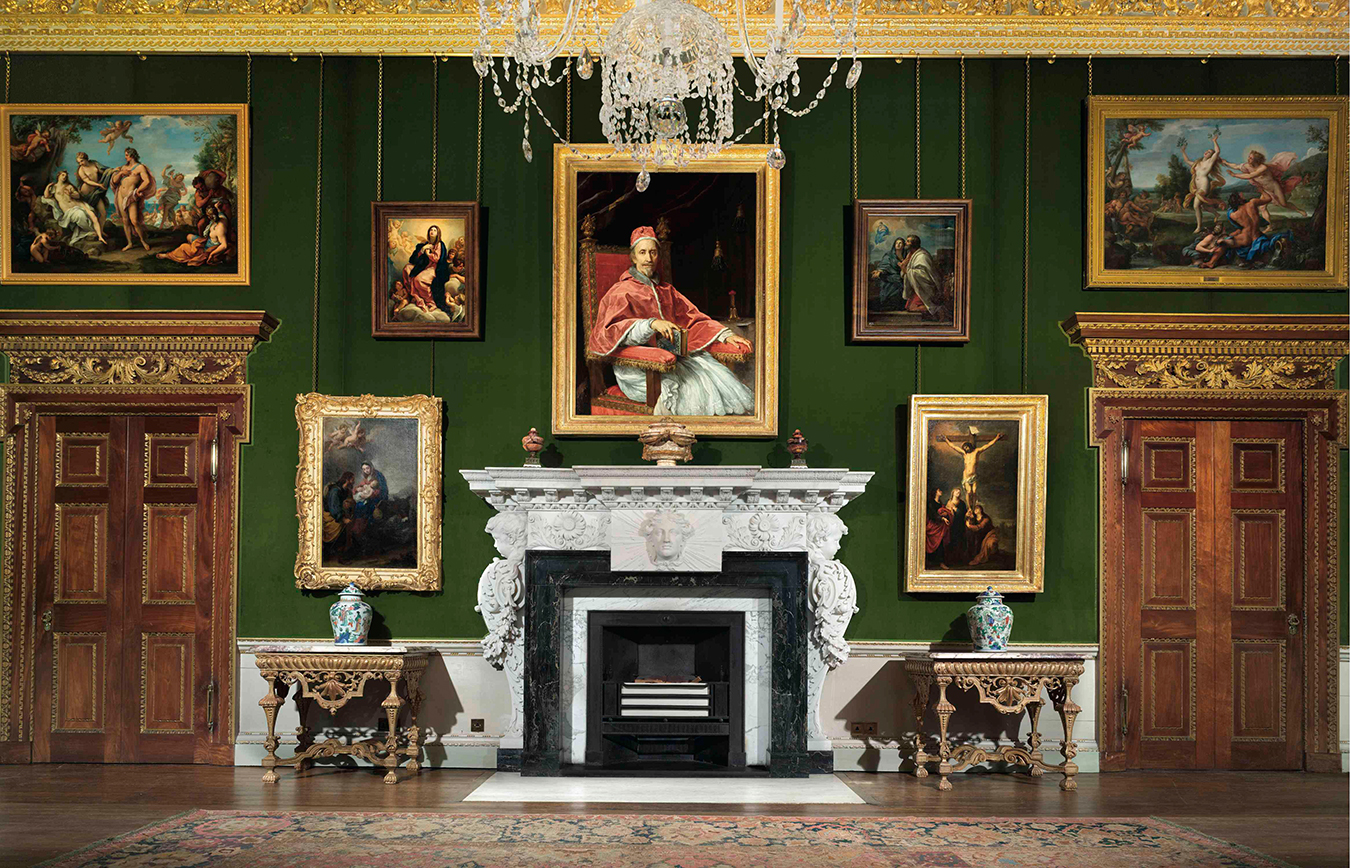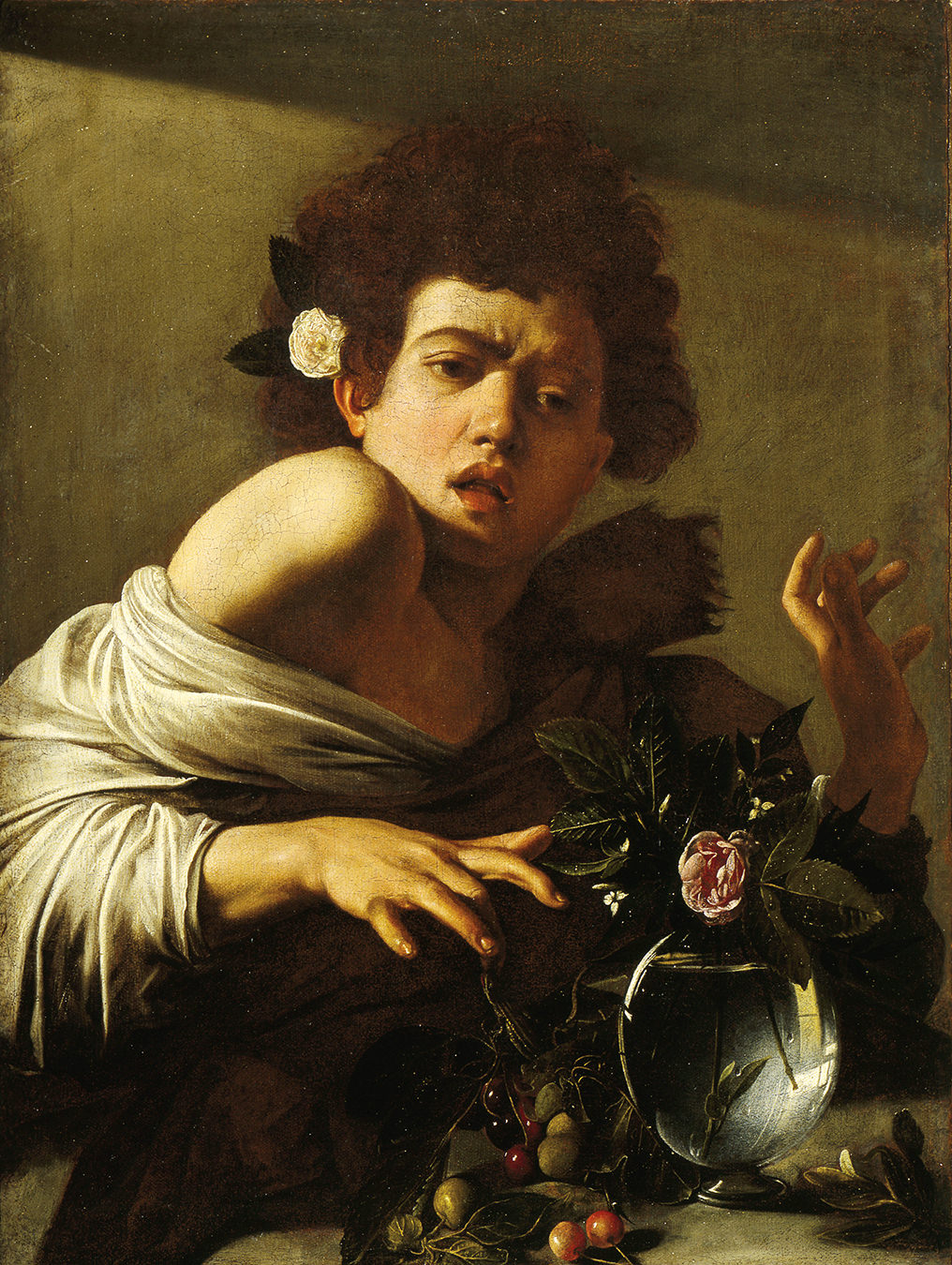-

Houghton Revisited installation, the Saloon.
-

Houghton Revisited installation, the south wall of the Marble Parlour.
-

Houghton Hall.
-

Houghton Revisited installation, the Carlo Maratta Room.
-

Houghton Revisited installation, the Common Parlour.
Houghton Revisited
Masterpieces on loan from the Hermitage.
Looking at its granite-grey exterior from afar, the manorial 18th-century Houghton Hall in Norfolk, England, doesn’t appear as though its inner walls would be brimming with canvases by Rembrandt van Rijn, Anthony van Dyck, or Diego Velázquez. And though it certainly did display those artworks a few hundred years ago, in recent history it hasn’t—until now. Enter Houghton Revisited: Masterpieces from the Hermitage, an ambitious exhibition created to showcase the extensive art collection amassed by the home’s original owner Sir Robert Walpole, Britain’s first Prime Minister.
As the backstory goes, following Walpole’s death in 1745, his family sold his storied collection to Catherine the Great of Russia—a sale negotiated by Christie’s. (Those paintings formed the foundations of the State Hermitage Museum collection as we know it today in St. Petersburg.) Houghton Revisited, curated by Dr. Thierry Morel, was three years in the making. Some 70 European Old Master paintings have been transported and rehung throughout the hallowed home in their original locations and only made possible by an archive of detailed watercolours, drawings, and plans.
Accompanying the generous loans by the State Hermitage Museum, St. Petersburg, over 15 lenders assisted in reinstating the original artworks, including the British Museum in London, the National Gallery of Art in Washington D.C., and the Metropolitan Museum of Art in New York. The sheer logistical feat is compelling. Paintings not only came from all over the world, but some individual pieces weigh upward of a half-ton; one of the most challenging canvases took 20 days to hang.
Part of Houghton Revisited’s delight comes from the feeling of an exhibit within an exhibit. In all its gilded glory, the ornate home itself is an unrivalled example of Palladian architecture. Its opulent Baroque-style interiors and furnishings by William Kent are originals, and wonderfully preserved. From a four-and-a-half-metre-tall bed in a lavish green velvet bedchamber, to a life-sized bust of Emperor Marcus Aurelius, to the angel- and lion-chiselled cornices, and rich mahogany details throughout, the house is a museum in its own right. The exhibition’s royal patron, HRH the Prince of Wales, is a frequent visitor to Houghton Hall and has called the home “one of the country’s priceless jewels … In my opinion, one of the greatest in England”.
The sprawling Houghton grounds hold more modern works of art, such as Chinese artist Zhan Wang’s lustrous Scholar Rock (1962), a giant stainless steel artificial rock sculpture, and the ethereal Waterflame (1974) by Denmark’s Jeppe Hein—which, as the name implies, is a “sculpture” of fire and water—set within the property’s award-winning five-acre walled garden. Brimming with flowers and foliage, the garden is tended under the watchful eye of Houghton Hall’s current resident Sir David Cholmondeley, a direct descendant of Walpole himself.
Houghton Revisited is on display until November 24, 2013.
Interior photos by John Bodkin; exterior photo provided by Houghton Hall.




